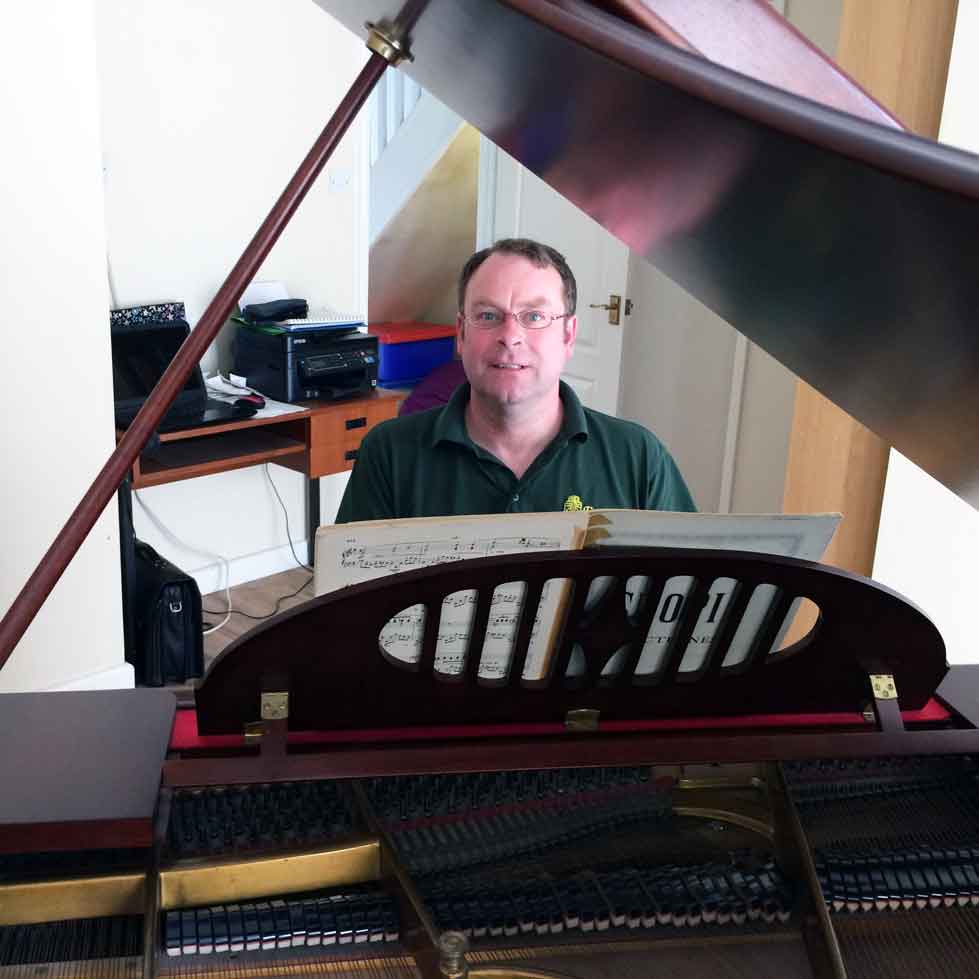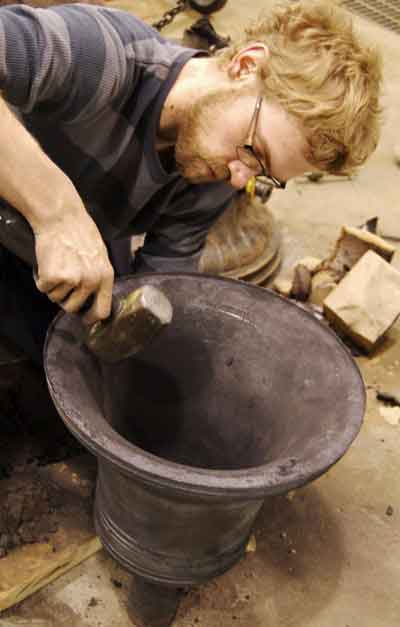Andrew worked at the world famous Bellfoundry of John Taylor & Co in Loughborough from 1985 to 2013. His first appointment was to take forward the semi-dormant handbell business both in the practical side of tuning new cast and old handbells and manufacturing new fittings for them as well as building a customer base to grow the business and its reputation within the handbell playing community. The foundations for a thriving business that is still ongoing were established during his tenancy of the position of handbell manager.
In 1987 he took up the post of Bellmaster in which he took charge of the foundry’s casting and tuning operations and quickly established a reputation for being able to asses the tonal potential of old bells, bringing out the best of their musical qualities. The new bells being cast by the foundry also benefited from his skill and the somewhat diminished reputation of the company was restored by the transformation in the quality of the bells being restored and cast.
In conjunction with the bell tuning work, Andrew undertook the upkeep of the foundry records and also had responsibility for the provision of automated bell ringing fittings. Inevitably this work brought him into contact with the company’s customers and suppliers where he further enhanced his reputation for clear and accurate information. He helped bring the tuning process up to date working on computer based tuning aids, teaching his staff to use these and how to interpret the information into a tuning scheme. This gave him more time travelling to churches to assess and report on the condition of these various installations. He travelled to the USA Europe, Australia and New Zealand in the pursuit of his job.
In 2005, the company merged with the local bellhanging business of Eayre & Smith and Andrew became one of the directors of the new company, retaining the same duties as previously. In 2009, this company was bought out by a consortium, Andrew being the sole survivor of the previous board of directors that was employed by the new company. Within this company, his responsibilities became solely those of business development. He parted company amicably with Taylors in 2013 to work independently of a single trading company.


